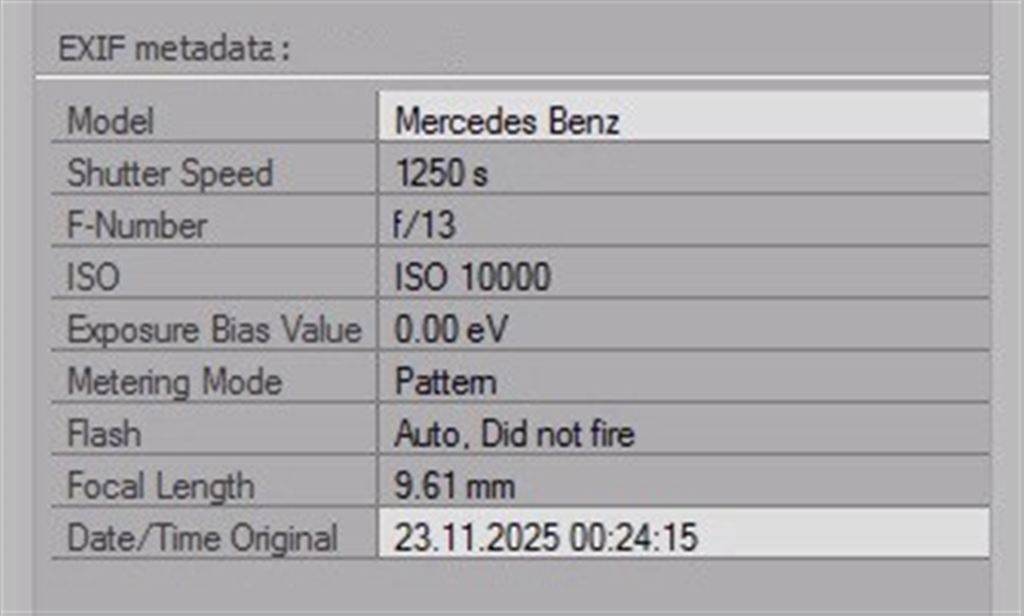Exchangeable image file format (officially Exif, not EXIF according to JEIDA/JEITA/CIPA specifications) is a standard that specifies the formats for images, sound, and ancillary tags used by digital cameras (including smartphones), scanners and other systems handling image and sound files recorded by digital cameras. (Wikipedia)
Often you will hear or read a request that Exif data be available with some image.
It is quite okay that people would like to check some interesting data within an image Exif, but many a time the reason is naively simple – and wrong! Some photographers appear to think that Exif data can be re-enacted, so the same effects they liked in the other picture will miraculously appear within their shots too.
Let me try to erase this belief.
In all photography there are always the same four elements to adjust: aperture, focal length, exposure, and sensitivity. It is the scene we are about to photograph that dictates the values of those elements. Sometimes the photographer adjusts some or all of the settings, at other times it will be done by some camera automation or other, depending on the author's wish and camera's abilities.
So if we want to stop some speedy action, our choice will probably prefer short exposure time, higher sensitivity, and larger aperture. Alternately, if we'd like to „smear“ the action across the frame, we would pick longer exposure time, lower sensitivity, and/or smaller aperture.
These data will be recorded with Exif, and it will show what the camera or photographer did to make that particular picture in that particular way. It will also show at what date and time the exposure has occured, what kind of camera and lens has been used, whether the flash fired, and some other interesting things.
The image containing those data has been made. That moment has passed. It will probably never be exactly repeated, even in the next photo of the same place. And the same ambience will most certainly not ever happen at some other place.
Would it then be possible to use the same data for another photo?
Well, yes – to some degree. It may work applied as a principle, but not by using the same values.
In the example above, to stop the action we'd use short exposure time, also high sensitivity, and large aperture. To „smear“ the action across the background, we'd pick long exposure time, low sensitivity, and small aperture. But the values will have to differ, since the light is different, the background too, and probably our camera / lens is not the same as the ones used for the scene we'd like to copy...
Every camera manufacturer has their own building principles. The lenses will be constructed differently; elements and groups, different glass, diameters, kinds of coating... There will be different sensors. Some sensors will be the same but differently used. The processing engine and the firmware, it will be different too. The colors will not be rendered equally even between two camera models of the same manufacturer, let alone different manufacturers...
Starting with scenery and light conditions, thru the camera and lens specifics... also the manufacture or calibration of in the monitors we use... there are all sorts of differences, even when the basic Exif elements seem to follow some standards! Andrew S. Tannenbaum once said that „the nice thing about standards is that you have so many to choose from“. Ditto here...
Let's also not forget the changes subsequently made in post-processing phase! Those alone can change an image to such a degree as to be completely different from what originally came out of the camera. To make things even more complicated, the digital cameras are loaded stupid with inbuilt effects and scene modes... all of them different, both by manufacturers and camera models.
Every image that we see is influenced with such factors to a degree which makes it unique - and thus unrepeatable.
There are some Exif data which point at the kind of approach to some unique theme. There is the time & date, which is as reliable as the camera owner's idea of importance of those. There is also the location / direction fix via GPS data, if the camera has that option, and if it was switched on at the time. So one can see what has been used, how and where. But is it enough to reverse-engineer some process in order to repeat all the qualities from another shot? No way.
In times of analog photography, the Exif was non-existent, and thus not needed. People would look at the pictures, enjoying what they see, and trying to grasp the photographer's reasoning and approach to the theme. Galleries and exibitions were the norm, and picture viewing neither knew nor took the current thumbnail-browsing speed.
Finally, Exif data are easily changed, and for various reasons. One of the most popular reasons is to cheat at some contest where certain shooting timeframe may be required by the rules. Sadly, some people would then edit and falsify the Exif data just to make their images eligible. See here for more about that kind.
So what's in the Exif?
Theoretically, a lot. Practically, not much. Re-usability, zero. Reliability too - as long as it is editable.
See the fun example below... and I did not even had to use some „proper“ Exif editor...
